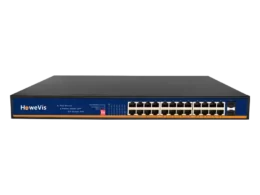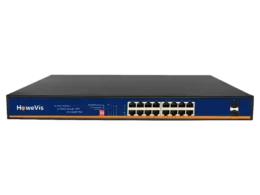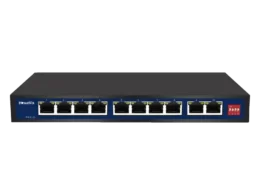Power over Ethernet has changed network transmission over cables by making it possible to supply data and power through the same network cables. As a networking instrument, The IEEE802.3af and the IEEE802.3at standards define power over Ethernet. PoE carries out its functions through the power sourcing equipment (PSE) and the powered devices (PD).
What is the PoE standard, you may ask? The PoE standard is a bracket term encompassing various systems that enable electricity transmission alongside data through a single cable. PoE transmits data and electric power through twisted-pair ethernet cabling to PoE devices: Internet protocol, also known as IP Cameras, Wireless access points (WAP), and voice-over protocol (VoIP) phones.
Let’s take a look at Power over Ethernet (PoE), the PoE standard, PoE integration and features, Standard implementation, Non-standard implementations, Power Capacity limits, and generally, all you need to know about the PoE standard.
The POE Standard and Specifications
There are many systems for transmitting data and power through electric cables; however, the Institute of Electrical and Electronics Engineers standard 802.3 has standardized only about three of them. This standard is categorized into three classes Alternative A, Alternative B, and 4PPOE. You need to understand the difference between the various alternatives.
Alternative A/Type 1: Alternative A, the same as the data pair, transmits data and power through the same network cables for 10 and 100Mbit/s variants. It is also referred to as the IEEE802.3af(PoE). It utilizes the phantom power technique by sending power through the data conductors. It does this by releasing the same voltage to each pair. This mechanism works smoothly since twisted-pair ethernet functions with differential signaling. Thus, there is no interference whatsoever with the transfer of data. This mechanism slightly differs for Gigabit Ethernet and faster variants: Alternatives A and B transmit power alongside data through the same cable pairs because the speed of the Ethernet network enables all four pairs to share data seamlessly.
Alternative B/Type 2: The Alternative B (spare pair) mechanism is the Reverse of A. It transmits power and data on different cable pairs. It is easier for the user to troubleshoot. It carries the four twisted pairs along while differentiating the routes for the positive and negative voltage. This alternative is also called the IEEE802.3at(PoE+).
4PPOE/Type 3 and 4: 4PPOE provides enormous power and caters adequately to the needs of high power-consuming equipment. Its four pairs of twisted-pair cables are fully functional, making it possible to give power to high-power ends such as laptop batteries, PTZ cameras, and even high-power wireless access points. The 4PPOE is the same as the IEEE802.3(PoE++).
These types do not function as stand-alone systems. The standard system also provides an automatic detection system, providing communication signals between the PSE and PD. This signaling operation is to help the PSE detect whether or not the device on the other end is PoE compliant. Once the detection is complete and the PSE receives signals, it then can decide what amount of power is required and should be transmitted to the powered device.
PoE Standard and Non-standard Implementation
IEEE802.3af of 2003 and IEEE802.3at of 2009 contain all the specifications for implementing the PoE standard. IEEE 802.3af was first released then, IEEE802.3at followed suit six years later. The PoE standard specifies the use of category three cables if the power needs are more diminutive. However, if tremendous amounts of power are required then, category five cables are to be used. Transfer of power is through a sourcing device; usually, a PoE switch or a PoE injector if the switch is a regular/ a non-PoE switch. The phantom technique allows the pairs to supply both power and data simultaneously. The Phantom approach is a system that delivers signals through the same cables.
The IEEE802.3bt, which is the latest standard, provides much more power than the earlier standard. It also offers better support for PoE within 2.5Gb, 5Gb, and 10Gb Ethernet cabling systems. Fear of excess current causing damage to the powered device due to power overload is almost non-existent. The power received is well-regulated; the device takes as much power as is needed for its smooth functioning and nothing more. Although our focus is the PoE standard, there are Non-standard implementations which include:
· Cisco
· Linear Technology
· Microsemi
· Passive
PoE voltage/Power capacity
The IEEE802.3at (PoE+) supplies about 30 W of Direct current to type 2 devices; this is against 15 W, which the 2003 IEEE802.3af delivers on each port. The PoE + supplies adequate electric power for VoIP phones, Wireless Access Points, and IP cameras, which require much more power than what is accessible with the IEEE802.3af. However, emerging technologies and updated versions have taken this challenge out of the way.
The Introduction of the IEEE802.3bt 2018 provides a higher threshold for power supply to devices with very high power requirements, which cannot be catered for by the IEEE802.3at. This new PoE standard significantly increases the standard capacity from about 60 W to 100 w at the PSE. Now, you might wonder how this is possible. It’s no rocket science. The power source supplies power through four cable pairs in distinction to the 802.3af version, which could only provide electric power over two pairs. The increase in capacity also widens the spectrum of devices powered by the standard since it accommodates highly power-efficient devices and applications that previous standards could not power.
-
 Industrial Gigabit Managed Ethernet PoE Switch, 8 Ports PoE+, 4 Ports SFP Uplink
Industrial Gigabit Managed Ethernet PoE Switch, 8 Ports PoE+, 4 Ports SFP Uplink -
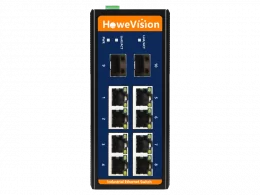 Industrial Gigabit Managed Ethernet PoE Switch, 8 Ports PoE+, 2 Ports SFP Uplink
Industrial Gigabit Managed Ethernet PoE Switch, 8 Ports PoE+, 2 Ports SFP Uplink -
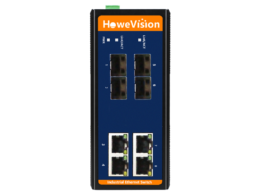 Industrial Gigabit Managed Ethernet PoE Switch, 4 Ports PoE+, 4 Ports SFP Uplink
Industrial Gigabit Managed Ethernet PoE Switch, 4 Ports PoE+, 4 Ports SFP Uplink -
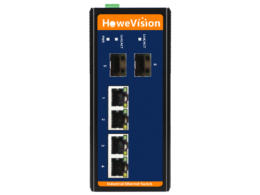 Industrial Gigabit Managed Ethernet PoE Switch, 4 Ports PoE+, 2 Ports SFP Uplink
Industrial Gigabit Managed Ethernet PoE Switch, 4 Ports PoE+, 2 Ports SFP Uplink
How PoE sources power
Ethernet switches with PoE capability are the primary devices used to source or provide power over the Ethernet system. Thus, to enable power transmission to the powered devices, they must be connected to these Ethernet switches. What then are PoE switches? It is a technology used to transmit power and data through twisted-pair ethernet cables to recipients known as powered devices.
However, since many users already have regular switches installed, the solution is to get a PoE injector. The Injector acts as a middleman between the PoE switch and the powered device by injecting power into the cable. It connects your PoE-compatible device to a regular/non-PoE network switch port. The cable then carries out the duty of passing it on to the device. Generally, a standard PoE injector is capable of supplying between 12 to 70 W of electric current. It is worth noting that although you do not need any special cabling to use your PoE injector, an 8-pin network cabling is the most advisable since it is in everyday use in ultra-PoE connections.
Can PoE/Injectors damage your devices? PoE-compliant injectors guarantee the uttermost safety for your system. Whether it is IEE 8032.3at/af/bt, it will not cause any damage to your devices whether or not the device is PoE compliant or not. Before it releases any power voltage to the device, it checks the amount of electricity the device needs through a ‘power handshake.’ The handshake detects the power need of the device by introducing a lower voltage first. Then, it gives feedback to the Injector. It is only then that the Injector can transmit power to the device. In doing this, the Injector supplies the exact amount of electric power that the device needs and nothing more. This way, there is neither an excess/overload nor a deficit.


